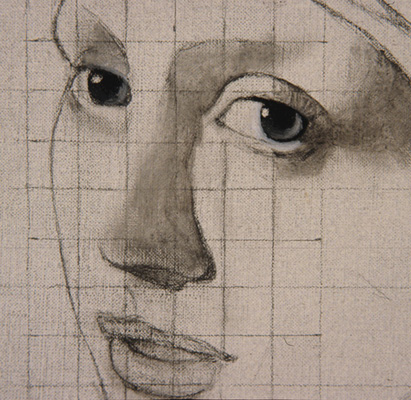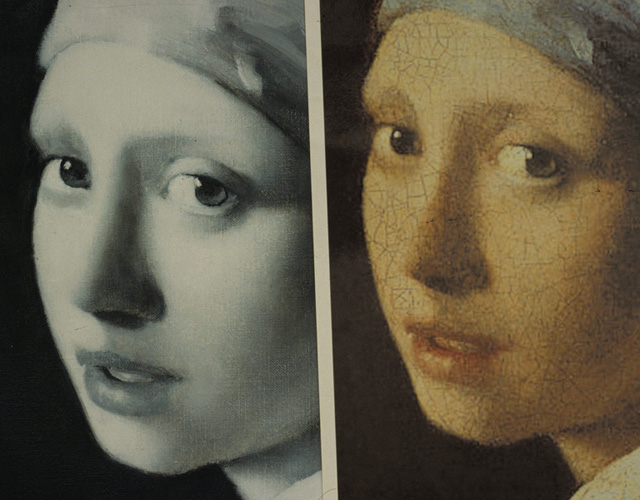
PAGE 2: Painting a Copy of Jan Vermeer's "Girl with a Pearl Earring"
Using Oil Glazing Technique and a Grisaille (Monochromatic Gray) Underpainting

Whenever I begin an oil portrait I always start with the eyes. They are what give the face an immediate sense of life. It is very hard to work on the other facial features first, and imbue them with lifelike qualities when the eyes are not already conveying this from the start.

At this stage a loosely applied, almost dry-brushed application of gray paint is being used to begin the modelling of the form of the girl's head. It is not clear that Vermeer's technique involved the use of a black and white underpainting (grisaille) like this one, but he more than likely used a monochromatic underpainting technique of some kind, perhaps done in a warm brown tone, as was common with the Northern European school of painting at that time.
When doing an oil painting copy that is colored using glazes, it tends to make it easier to be accurate if a fairly well finished and detailed underpainting is done beforehand, to well define the major light and dark areas. Care must be taken to not allow the light areas of the underpainting to be painted in too dark a value of gray. The light and highlighted areas should be kept quite high key in the underpainting, so that these bright white areas help to illuminate the semi-tranparent layers of glazed oil paint that are applied over them. Throughout the painting process I am using soft synthetic sable type brushes made for oil and acrylic painting, rather than stiff hog bristle oil painting brushes. I am also painting on a finely woven linen artist's canvas, as Vermeer and other Dutch painters from that period would also have done.

